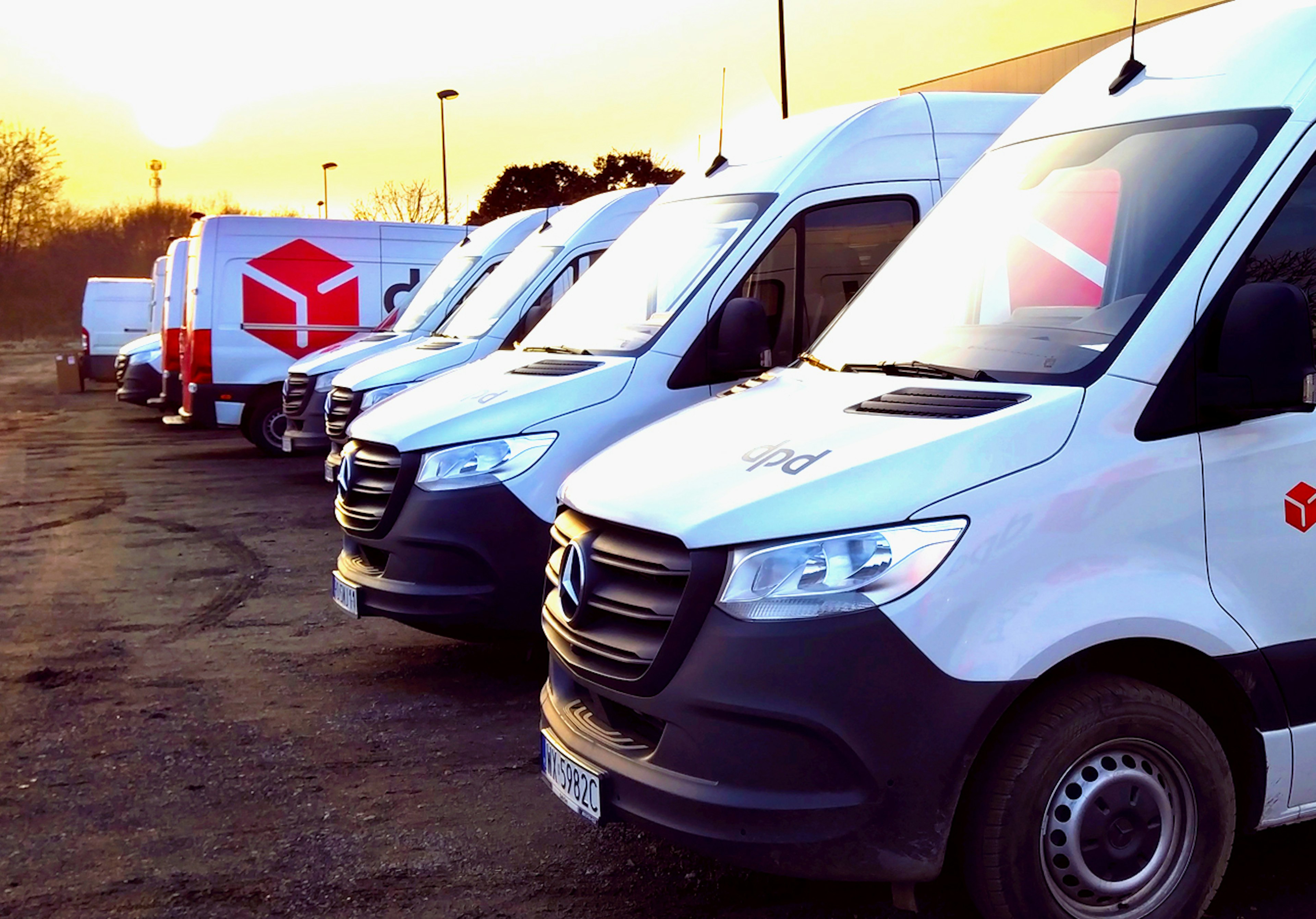Six things every CEO should know about their fleet
There’s a challenge that virtually every CEO must tackle: walking that fine line between getting lost in the minutiae of the business and soaring so high as to lose touch with critical details. So, what should a CEO know when it comes to their fleets?

Regardless of a company’s size and industry, there’s a challenge that virtually every CEO must tackle: walking that fine line between getting lost in the minutiae of the business and soaring so high as to lose touch with critical details. So, what should a busy CEO know when it comes to their fleets? We asked four Mike Albert Fleet Solutions Client Partnership Managers for their perspectives, which coalesced around six key points.
#1 Recognize the link between your forecast and your fleet.
Is your current fleet adequate to meet your company’s growth over the next year? Two years? Five years? Probably not. Given the time it takes to identify, acquire, and upfit the necessary vehicles, it’s virtually never too early to start planning to accommodate your forecasted growth.
“Aligning your fleet planning with your business forecast to allow for factory ordering to your ideal fleet specs can save money and, in the long run, help you make it, too.”
This has never been truer than in these days of supply chain pandemonium. “Most vehicles you see currently sitting on lots have already been pre-sold, and those that haven’t are commanding a 25 to 35% premium,” said Joe Voors. “Aligning your fleet planning with your business forecast to allow for factory ordering to your ideal fleet specs can save money and, in the long run, help you make it, too.”
#2 Consider your fleet a controllable expense.
While there’s no getting around the fact that building and maintaining a company fleet is a significant expense, it is a controllable one. “There are ways to reduce costs without giving up anything significant,” said Brent Pietroski. “For example, buying vehicles and running them until the wheels fall off is rarely the most cost-effective route.”
Detailed fleet maintenance programs and vehicle selection are critical. By getting granular and looking at month-over-month and year-over-year data, your team can determine the best time to replace vehicles—and, critically, which specific ones to replace them with. In most cases, at least several vehicles could serve your company’s needs. But the absolute right one—as measured via multiple metrics—can meaningfully lower your total cost of ownership. “I’ve been recommending a specific hybrid model to some clients even though it’s a pricier solution upfront,” said Pietroski. “But when you factor in fuel savings, lower maintenance costs, and resale value, it’s a clear winner in certain situations.”
As for maintenance costs, it’s genuinely a matter of staying on top of them or finding yourself buried beneath them. “Vehicle downtime is costly and potentially significantly so,” said Nathan Niese. “A missed service call can mean the loss of an existing customer or the opportunity to land a new one. When you factor in your lifetime customer value, this can result in the loss of thousands of dollars, if not more.”
Fuel represents another opportunity to control costs. “Not only are there fuel programs that could save you money, but there are also driver behaviors that can help, too,” said Christina Hartzler. “It’s hard to overstate how much fuel is wasted due to excessive idling. Proper driver training can meaningfully reduce the amount of idling in which your fuel dollars go up in fumes, literally.”
All four panelists agreed that telematics is the linchpin to reducing fuel costs. They can help shape preventive fleet maintenance programs that help your fleet manager minimize vehicle downtime and breakdowns. Though hard to quantify in dollars, these frustrating experiences not only negatively impact your costs but can irritate drivers and inspire them to leave for greener, less maintenance-riddled pastures. Telematics data can also help you determine if excessive idling is occurring and shape solutions to remedy the matter.
#3 Tap into the financial benefits of leasing.
In virtually all cases, leasing instead of buying fleet vehicles makes the most sense from a strict accounting point of view. Leasing allows you to preserve capital, freeing up cash. If you can save a couple of hundred dollars or more per vehicle per month by leasing, that’s more cash for R&D efforts, marketing campaigns, a new hire—wherever some additional dollars are most needed.
“Leasing frees up dollars and allows you to move newer vehicles into your fleet faster, keeping your fleet looking and feeling fresher,” said Niese. “Sometimes there’s a psychological barrier to leasing as decision-makers understandably worry about the condition of their vehicles at the end of the lease. But with the right driver incentives and preventive maintenance programs, this worry can be alleviated, if not eliminated.”
#4 Recognize that your fleet is more than a tool to move people, goods, and services.
Besides serving its core function, your fleet is also an HR and marketing tool. Voors noted that the proper vehicles with the appropriate upfit, fuel program, and maintenance support enhance employee morale, which in turn improves employee recruiting and retention. “Getting into a seven-year-old vehicle that’s been beaten up is not the way to make a good impression on an employee,” said Voors.
Pietroski agreed and said, “A question that we pose to our clients is: If your loved one was driving a vehicle in your fleet, how would you want that vehicle managed and maintained? The good news is that you can do right by your employee and customers and improve your bottom line.” The solutions are found in custom fleet maintenance and fleet vehicle safety programs.
As they move down the road, clean, good-looking vehicles make countless positive impressions for your brand. Choosing to go green with hybrids or electric vehicles can help your company meet its Environmental, Social, & Governance (ESG) goals and further boost its image. “Hundreds of surveys make it clear: Customers want to see companies adopt hybrids and EVs,” said Hartzler.
#5 Make your fleet data more manageable by breaking it up into four stages.
Data has been remaking our world and continues to do so at an increasing rate. This is undoubtedly true of fleet data. When properly analyzed and applied, it can cut costs, improve customer service, enhance driver satisfaction, and even save lives (thanks to its ability to encourage safe driving practices). That said, our panelists acknowledged that it’s easy to drown in data. This leads to the dreaded—and increasingly prevalent “analysis paralysis.” To prevent this from happening with your fleet, Pietroski suggested that it helps to break your data down into four stages:
First, the capture and compile stage. There’s no data if there’s, well, no data. Is your fleet taking advantage of telematics to gather all the data you can, or at least what you consider most relevant?
Second, the analyze stage. For example, suppose that Driver #1’s operating costs are significantly more than Driver #2’s. That’s something worth noting, yes. But what does this mean? Does it even matter? It could be as simple as Driver #1 logging more miles than Driver #2, or it could signify that Driver #1’s vehicle has some serious performance issues. When it comes to data, the devil is in the details. This stage is about teasing out the stories from your data to see what it’s really trying to tell you.
Third, the external benchmarking stage. Perhaps your fleet team has cut your average cost per mile (CPM) by 5 cents, which could be a cause for celebration. However, if your industry average is an additional three cents below your company’s, then perhaps more savings can be found.
Fourth, the put-it-all-to-work stage. The key here is making the data easy to access and act upon. For example, if you’re using telematics to monitor driver behavior and award bonuses to those with the best safety scores, this shouldn’t require updating and preparing spreadsheets every month. Your crucial data reporting should be standard and repeatable; there’s no need to reinvent the wheel when data naturally lends itself to standardization. This is also the stage where you can repeatedly track and adjust your data, perhaps finding new factors that capture more data.
#6 Have clear, written policies for your drivers.
When drivers, knowingly or not, mistreat their vehicles or drive inappropriately, they increase your fleet’s costs, put themselves—and others—at risk, and damage your brand. This is why every company with a fleet needs a clear set of policies and the necessary training.
Without such policies and training, you may find yourself in a situation where, say, a driver used one of your vehicles to tow a boat to a location hundreds of miles away.
“When it comes to driver behavior data, it’s best to use it to positively reinforce the right actions instead of using it to call out and punish offenders,” said Hartzler. “For major offenses or repeat offenders, there are always one-on-one talks—and more training.”
With these six factors in mind, CEOs can help make smart decisions about their fleets—and then get on to the many other details requiring your attention.
Click here to access the companion article, What Every CEO Should Know About Their Fleet: A Checklist


